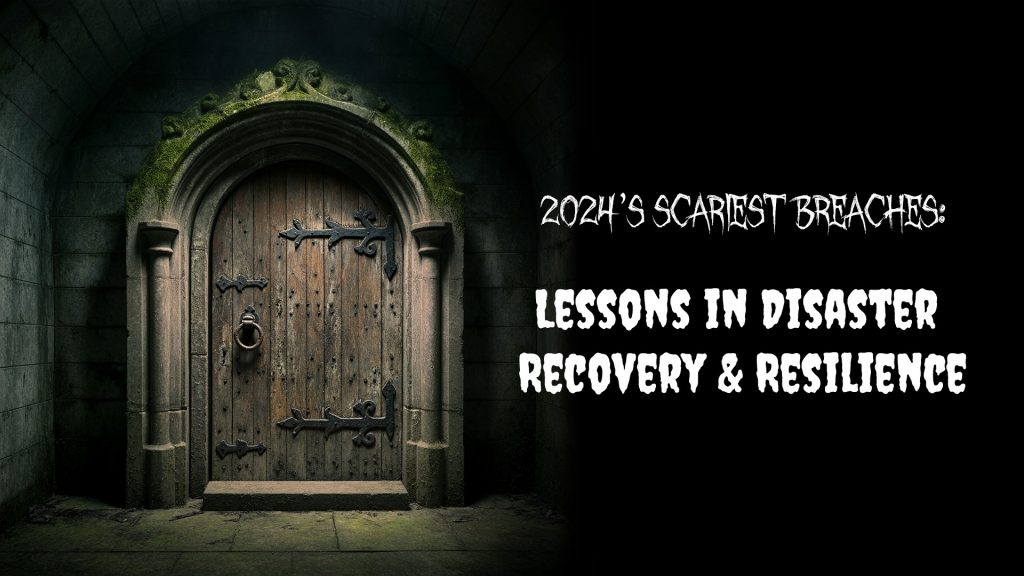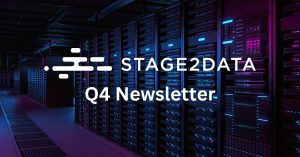As 2024 draws to a close, the rise in cybercrime has left businesses and individuals more vulnerable than ever. Over 1 billion records were compromised this year alone, costing the U.S. economy between $225 billion and $600 billion annually due to intellectual property theft. The challenges are growing, from sophisticated ransomware attacks to nation-state intrusions that threaten national security and economic stability.
In this article, we’ll look at some of the most significant breaches and cyberattacks of 2024. You’ll learn how these incidents unfolded, their impacts, and what you can do to protect your organization from similar threats.
The Year of Data Dread: 2024’s Most Haunting Breaches
AT&T’s Double Data Breach Nightmare
2024 has been a tough year for AT&T, one of the largest telecom companies in the U.S. The company faced two major data breaches within months of each other.
First Breach: In July, hackers accessed data from Snowflake, a platform AT&T uses to manage information. This breach exposed phone numbers and call records of about 110 million customers. While the actual calls and texts weren’t accessed, the metadata revealed who was communicating and when, sometimes even their locations. Additionally, phone numbers of non-customers were leaked, putting vulnerable individuals at risk. Reports suggest AT&T may have paid a ransom to delete the stolen data, but details remain unclear.
Second Breach: Earlier in March, a separate incident saw a data broker leak 73 million AT&T customer records online, including personal information like names, phone numbers, and addresses. The situation worsened when a security researcher found encrypted passcodes within the leaked data, which could be unscrambled to hijack 7.6 million customer accounts. AT&T responded by resetting these passcodes, but the source of the leak is still unknown.
Change Healthcare’s Catastrophic Ransomware Attack
In February, Change Healthcare, part of UnitedHealth Group, was hit by a ransomware attack from the BlackCat gang. The attackers exploited a lack of multi-factor authentication (MFA) to access the company’s systems, stealing up to 4TB of sensitive patient data. This breach disrupted healthcare services across the U.S., affecting nearly 40% of all medical claims and compromising the information of over 100 million people. UnitedHealth Group paid a $22 million ransom to mitigate the damage, and investigations by the Office for Civil Rights are ongoing.
Synnovis Ransomware Attack Disrupts London’s Healthcare
In June, Synnovis, a pathology lab serving London’s hospitals, was targeted by a Russian ransomware group. The attack stole data related to 300 million patient interactions, causing widespread disruptions in patient services. Operations were postponed across multiple NHS trusts, leading to a critical incident declaration in the UK health sector. Synnovis refused to pay the $50 million ransom, preventing the hackers from profiting but leaving the government to handle the consequences.
The Snowflake Hack: Ticketmaster and Beyond
The Snowflake data breach was one of the largest incidents of 2024, affecting many high-profile companies. Hackers used stolen credentials to access Snowflake’s cloud data platform, stealing hundreds of millions of records from clients like Ticketmaster, Advance Auto Parts, and TEG. Ticketmaster alone suffered a breach of 560 million records, exposing sensitive customer information such as order history, payment details, and contact information. Incident response firm Mandiant reported that around 165 Snowflake customers experienced data theft, with more likely to come forward.
(Dis)Honorable Mentions
While the breaches above were headline-grabbing, 2024 saw numerous other significant incidents:
- MoneyGram: Replaced its CEO weeks after a major data breach exposed customer information and transaction records.
- OnePoint Patient Care: An Arizona-based hospice pharmacy suffered a breach affecting over 795,000 individuals.
- BingX: A crypto exchange was hacked, resulting in over $43 million being stolen.
- Fidelity Investments: Experienced a breach compromising the personal data of 77,000 customers.
- Kaiser Permanente: Accidentally shared private health information of 13.4 million patients with advertisers.
- National Public Data: Filed for bankruptcy after a breach exposed 3 billion records, affecting around 270 million individuals.
The Dark Arts: Evolving Cyberattack Techniques
The Vishing Trap: Exploiting Remote Connection Tools
Hackers increasingly use voice phishing (vishing) to trick users into granting system access. By pretending to be IT staff, attackers gain entry to networks. For example, Microsoft Threat Intelligence found that criminals misused Quick Assist, a remote connection tool, to deploy Black Basta ransomware by posing as trusted contacts.
The Silent Signal: Infostealers as Precursors to Ransomware
Infostealer malware is now a key step in ransomware attacks. These tools steal digital identities and credentials, which are then sold to ransomware gangs. The Qilin ransomware gang used infostealers to gather credentials before launching their attack, showing the detailed planning behind these assaults.
The Rise of “Evil AI”: Supercharging Cyberattacks
Artificial Intelligence (AI) is a double-edged sword in cybersecurity. While businesses use AI to protect their systems, hackers use it to create more sophisticated threats. Tools like WormGPT, Evil-GPT, and others allow even unskilled hackers to execute complex attacks, including generating malicious code and crafting convincing phishing emails. This technology lowers the barrier for cybercriminals, making threats more widespread.
Nation-State Cyber Threats: The Persistent Chinese Menace
Cyber threats from nation-states have intensified, with China being the most active threat to the U.S. government, private sector, and critical infrastructure networks.
Chinese Advanced Persistent Threats (APTs)
Several Chinese state-sponsored groups, including Volt Typhoon, Flax Typhoon, and Salt Typhoon, have been highly active in 2024.
- Volt Typhoon: Compromised numerous U.S. IT networks, positioning themselves to disrupt critical infrastructure if conflict arises.
- Salt Typhoon: Breached U.S. broadband providers like AT&T, Verizon, and Lumen Technologies, accessing court-authorized wiretapping data. This breach could provide China with insights into U.S. national security investigations.
Economic Impact of Cyber Theft
The theft of intellectual property and sensitive data by groups like those from China costs the U.S. economy between $225 billion and $600 billion each year. These activities threaten national security and weaken the U.S.’s position in the global economy, emphasizing the need for stronger cybersecurity measures.
Sealing the Gates: Remediation Strategies to Ward Off Attacks
With cyber threats on the rise, organizations need effective strategies to protect their data and systems. Here are three key approaches:
1. Economic Impact of Cyber Theft
An incident response plan (IRP) helps minimize damage during a cyberattack. Key steps include:
- Improve Asset Management: Regularly update cybersecurity tools to address current threats. Train your response team on all tools and keep licenses and upgrades centralized.
- Centralize Communication: Use one platform for all incident-related communications to avoid conflicting information and promote teamwork.
- Test, Test, Test: Regularly conduct mock scenarios and exercises to ensure your team is ready for real incidents, allowing for quick and effective responses.
2. Strengthen Your Frontline with Security Awareness Training
Employees are often the first defense against cyber threats. Providing comprehensive security awareness training helps your team recognize and respond to threats like phishing and social engineering. Regular training on the latest cybercriminal tactics reduces the risk of successful attacks.
3. Stay Resilient with the Last Line of Defense — Data Backup & Recovery
Disasters can strike at any time, and having a reliable backup system is crucial. Disaster Recovery-as-a-Service (DRaaS) is one of the best weapons in your cybersecurity arsenal. By incorporating DRaaS into your cybersecurity strategy, you build a stronger defence and ensure that your operations remain uninterrupted, even in the face of adversity. DRaaS provides:
- Quick Recovery: Restore critical systems and data swiftly after an incident, minimizing downtime and operational disruptions.
- Scalability: Easily scale your disaster recovery efforts to match the growth of your organization, ensuring comprehensive protection as your needs evolve.
- Cost-Effectiveness: Reduce the financial burden of maintaining on-premises disaster recovery infrastructure.
For value-added resellers and SMEs, Stage2Data’s DRaaS can be an invaluable add-on to existing solutions. Resellers can offer enhanced disaster recovery options to their clients without significant upfront investments, while SMEs benefit from affordable, scalable protection that integrates seamlessly with their current systems. This partnership ensures that businesses of all sizes can maintain resilience against cyber threats without compromising on quality or efficiency.
Stay Safe and Secure in 2025 and Beyond
2024 has been a challenging year for cybersecurity, marked by significant breaches and evolving threats that have exposed vulnerabilities across various sectors. From large-scale data thefts to sophisticated nation-state attacks, the landscape is more dangerous than ever. By understanding these threats and adopting comprehensive security strategies, you can protect your organization and build a secure digital future.
Stage2Data provides solutions to strengthen your defences. With advanced cybersecurity solutions such as DRaaS, you can safeguard your business from today’s threats and prepare for tomorrow’s challenges.





